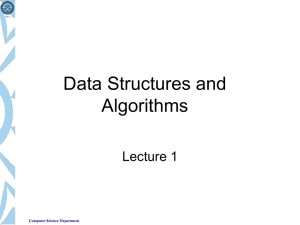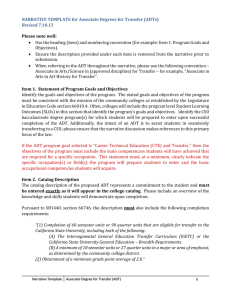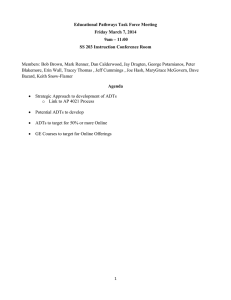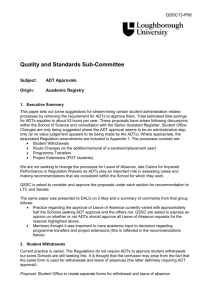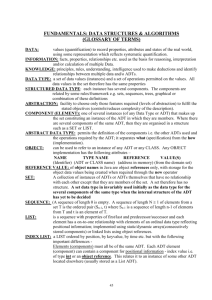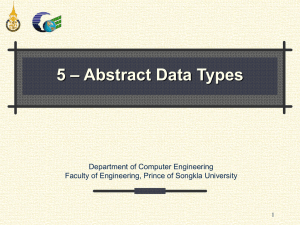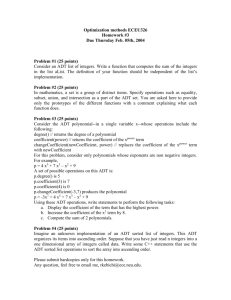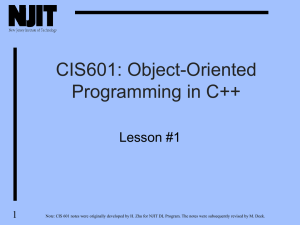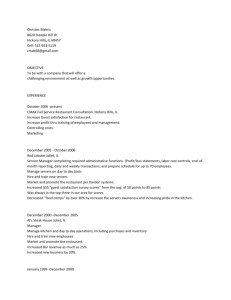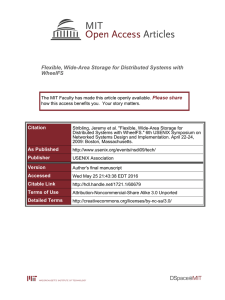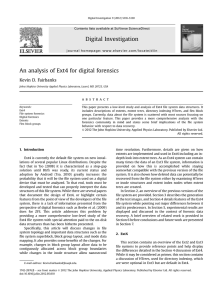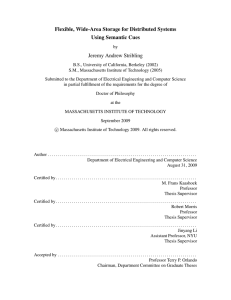Abstract Storage Moving file format‐specific abstrac7ons into petabyte‐scale storage systems Joe Buck, Noah Watkins,
advertisement
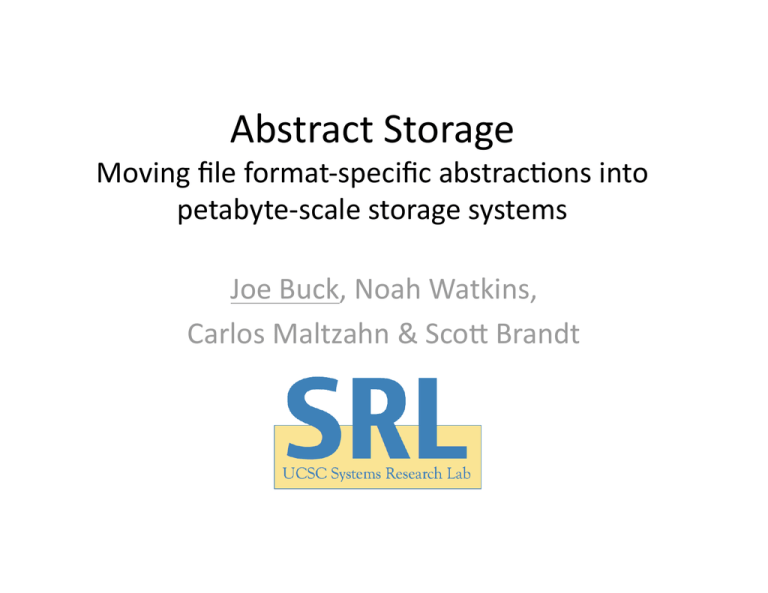
Abstract Storage Moving file format‐specific abstrac7ons into petabyte‐scale storage systems Joe Buck, Noah Watkins, Carlos Maltzahn & ScoD Brandt Introduc7on • Current HPC environment separates computa7on from storage – Tradi7onal focus on computa7on, not I/O – Applica7ons require I/O architecture independence • Many scien7fic applica7ons are data intensive • Performance increasingly limited by data‐ movement HPC Architecture Diagram courtesy of Rob Ross, Argonne Na7onal Laboratory HPC Architecture Current boDleneck in the controllers Diagram courtesy of Rob Ross, Argonne Na7onal Laboratory HW boDleneck HPC Architecture Future boDleneck: I/O nodes / storage nodes network Diagram courtesy of Rob Ross, Argonne Na7onal Laboratory HW boDleneck Approach: Move func7ons closer to data • Use spare CPU cycles at intelligent storage nodes – Replace communica7on with CPU cycles • Provide storage interfaces with higher abstrac7ons • Enable file system op7miza7ons due to knowledge of data structure • Do this for small selec7on of data structures – This is not another object‐oriented database! Why Now? • Parallel file systems move more intelligence into storage nodes anyways • Advances in performance management and virtualiza7on • Moving bytes slated to be a dominant cost in exa‐scale systems • Scien7fic file formats and operators increasingly standard – NetCDF, HDF • Structured abstrac7ons have seen recent success – BigTable, MapReduce – CouchDB Abstract Storage Storage as an Abstract Data Type • ADT decouples interface from implementa7on • Only few ADTs necessary, e.g.: – Dic7onary (Key/value pairs) – Hypercube (Coordinate Systems) – Queue • Op7mize each one for each parallel architecture – Data placement – Performance management – Buffer cache management (incl. pre‐fetching) – Coherence ADTs and Scien7fic Data • Scien7fic data is normally mul7‐dimensional, lending itself well to this approach – Mul7‐dimensional and hierarchical structures are readily mapped onto data types • Mul7ple structures mapped onto (por7ons) of the same data for more efficient access – Operate on the appropriate structure (matrix, row, element, etc) Implementa7on Challenges • Programming model for implemen7ng ADTs • Everything based on byte streams – Current storage APIs (e.g. POSIX) – Current file system subsystems • Buffer cache • Striping strategies • Storage node interfaces • Need awareness of structured data – New interfaces at various storage layers Prototype: Ceph Doodle • Focus: Programming model for implemen7ng ADTs • Construc7on and test framework for: – Storage abstrac7ons – ADT implementa7ons – Programming models (flexibility, ease‐of‐use) • Based on object‐based parallel file system architecture (e.g. Ceph). Ceph Doodle Features • Rapid prototyping: – Uses RPC mechanism – WriDen in Python • Support for plugins for different ADTs – Byte stream (implemented as storage objects) – Dic7onary (implemented as skip lists) Ceph Doodle Overview Clients use applica7on‐specific interfaces Client Applica7on ADT‐Opera7on(…) Data Type ADT‐Opera7on(…) RPC_X(Op, ObjID, Context) RPC_Y(Op, ObjID, Context) RPC_Z(Op, ObjID, Context) … Client Striping & Caching Strategy RPC to OSD With Object Data types are cross‐cufng system modules Striping and caching are op7mized per data type OSD RPC ADT Opera7on(Object, Context) Mappings route ADT RPCs to storage nodes Dic7onary Implementa7on: Skip lists 4 3 2 1 0 .head 9 23 1024 1025 .tail Splifng skip lists across nodes 4 3 2 1 0 .head 9 23 1024 1025 .tail Future Work • Building on top of Ceph – New dynamically loadable object libraries • Redesigning caching – Data structure boundary aware v.s. pages – Pre‐fetching = access paDerns = ADT parameters • Rethinking striping strategies • Unified views supported by virtual ADT layer • Embedding versioning and provenance capturing into file system Thank you buck@cs.ucsc.edu
